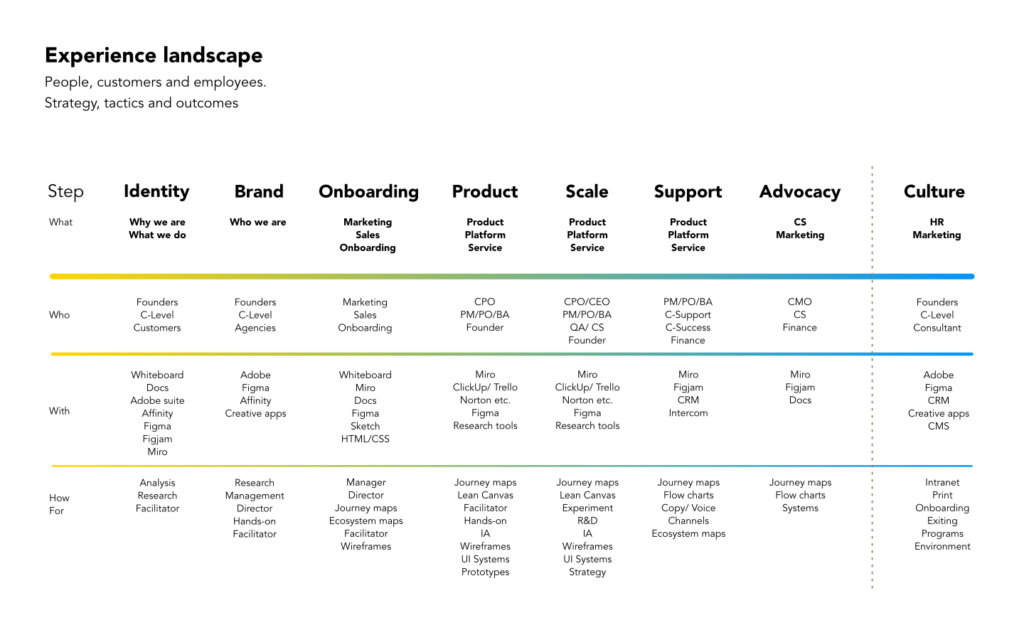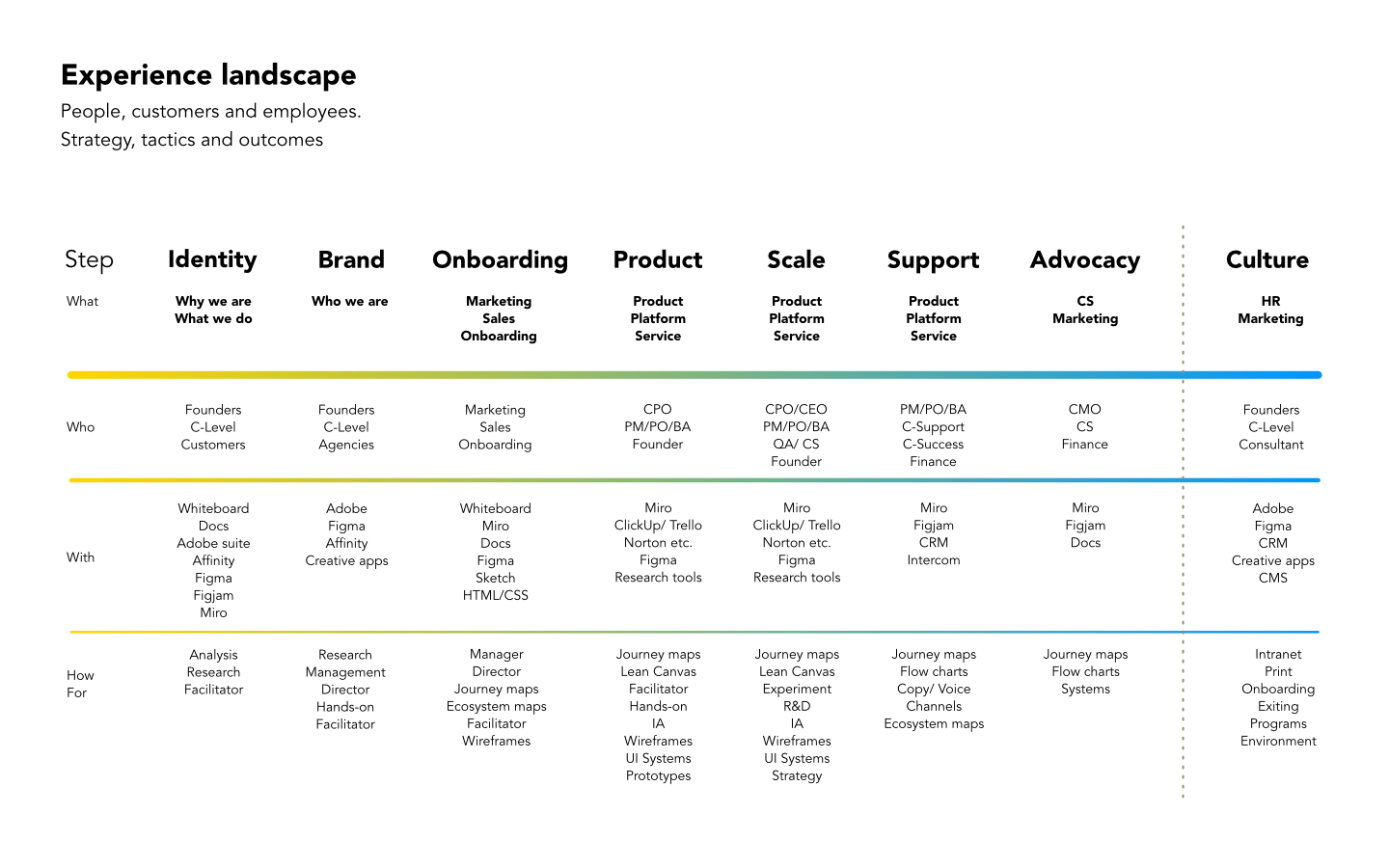E2E ecosystem
The End-to-End Customer Experience design landscape is a storytelling exercise showcasing the story of the primary actor (customer, user, persona) and the various supporting individuals, tools and processes. Ecosystem mapping is a fundamental exercise and tool to find gaps in the journey, highlight risks and opportunities as well as form roadmaps and budgets.
A design landscape is also crucial for other teams’ set-up, budgets, expertise and processes. When we showcase an E2E landscape we can quickly identify the resources needed to fulfil those experiences. This is also helpful for the design handover processes and skillset development.
Empathy is a key component in designing a product, service or E2E experience. Trust needs to be built from the get-go, making sure the brand promise is adhered to at each step of the customer journey. That includes direct conversations, copywriting, visual identity, onboarding, education, pricing and support.
Consistency is required across all touchpoints, however some leniency and flexibility should be allowed within a certain framework. Consistency in visual language and tone of voice provides comfort and familiarity to customers and is a crucial guideline for teams and external agencies developing those assets.
Another key component in successfully developing an E2E and CX environment is curiosity and adaptation. The digital environment and industries are constantly changing and evolving. Teams need to learn and shift not only towards short-term execution and outcomes but also a long-term vision, tools and trends.
Developing a CX ecosystem map and finding areas of value, pain points or opportunities is one way to make sure customers are receiving value and experience out of the products, features and services they are paying for. Storytelling is a way to educate and create awareness among stakeholders and team members allowing people to understand the customer’s landscape and other factors that impact their decision-making.
Persona and user-type development are a great way to showcase and remind the team who the people we are building for, however, this is not a ‘set and forget’ process as personas and customer anticipation, habits and objectives are constantly changing.
The internet, browser, mobile, COVID and AI are some of the significant periods that required swift shifting of design thinking, processes, team building, tooling, human behaviours, consumption culture and entire ecosystem transformations.

